This post may contain affiliate links. If you make a purchase through a link, I may receive a small commission, at no cost to you. These commissions help keep this website up and running, and I thank you for your support. Read my full disclosure here.
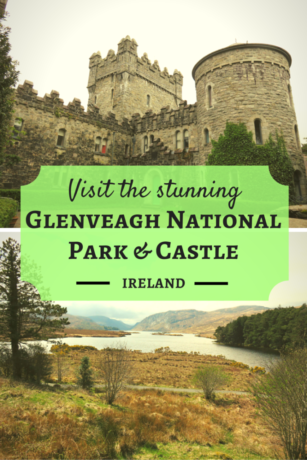
The hauntingly beautiful Glenveagh National Park is located in the north west of Ireland, a largely Irish speaking region in County Donegal. The Park runs over 16,000 hectares and is located in the heart of the Derryveagh Mountains and boasts forests, lakes, mountains, moorland and bogland. It consists of three distinct areas; the peatlands of Lough Barra bog, the quartzite hills, and the Glenveagh Estate and Derryveagh Mountains.
Back in 1861 Glenveagh Park was formerly a private estate owned by John Adair. In order to create his grand recreational and hunting estate, Adair cleared the land of its tenants. Known as the “Derryveagh Evictions”, 224 tenants were cruelly forced from their homes simply to improve the aesthetic. Consequently Adair was very much disliked by the people of Donegal. Upon these grounds Adair built his Scottish Baronial style castle between 1867 and 1873. Over the years the property changed hands a number of times before eventually being handed over to the state in 1975. It was opened to the public in 1984.
The Visitor Centre is a good place to start your tour of the Park and is located at the northern end of Lough Beagh (also known as Lough Veagh). Here, you will find a detailed history of the park and information about the walking trails, flora and fauna. The exhibition detailing the infamous evictions that took place is of particular interest.
From the Visitor Centre, there is an absolutely gorgeous lakeside walk. A flat gravel 3.5km/40 minute path will take you down the glen to Glenveagh castle and its renowned Victorian gardens. Alternately, for those with limited mobility a bus runs back and forth between the visitor centre and castle and only costs €3 return (concessions available). If you find yourself too tired to walk back from the castle, you can purchase a one way bus ticket at the castle reception.
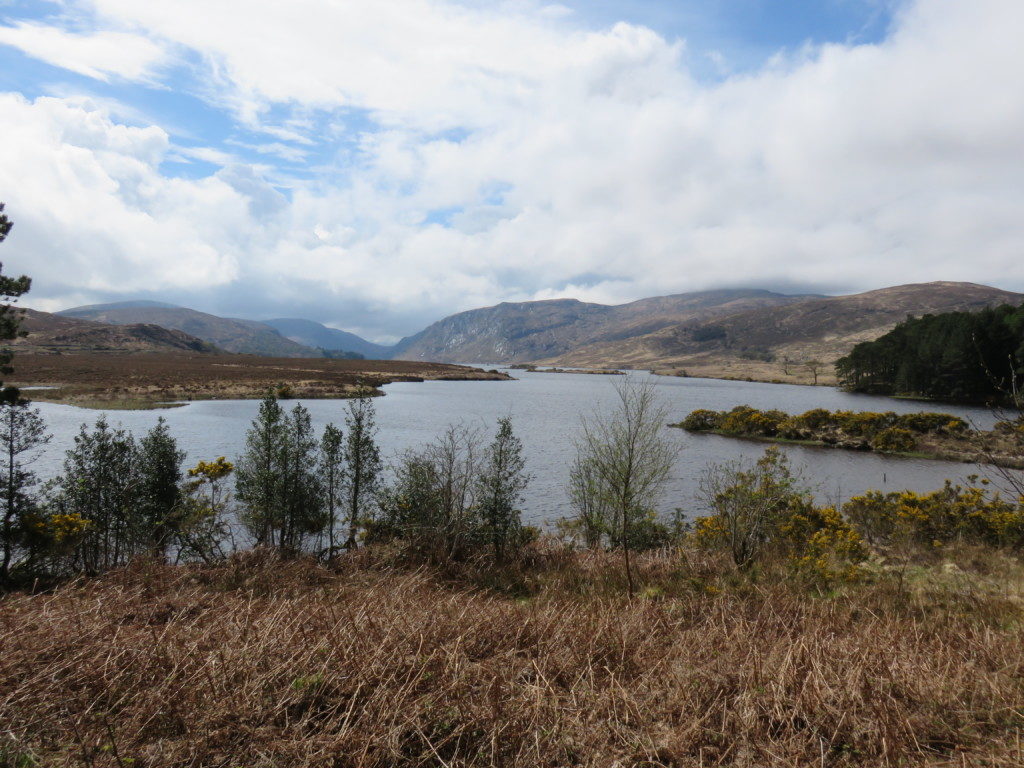
The walk to the castle begins at the bus shelter, where there is a breathtaking view of the valley of Glenveagh. The path leads walkers through mature Austrian Pines and scattered native broadleaved trees such as Holly, Rowan and Birch. A bridge takes you over the Owencarrow River which is home to breeding salmon, trout, eel, freshwater pearl mussel, and otter (if you’re a keen fisher, read more about fishing below). The path opens up to a stunning landscape of blanket bog and wet heath habitat that is typical of much of Glenveagh. These are wet peatland habitats and although mainly treeless, they are home to a range of plant and animals, many of which are unique to these habitats. As the path meanders along the glen and lake side, have your camera ready as there are beautiful views to enjoy across Lough Beagh. This path eventually ends at the beautiful Victorian castle gardens.
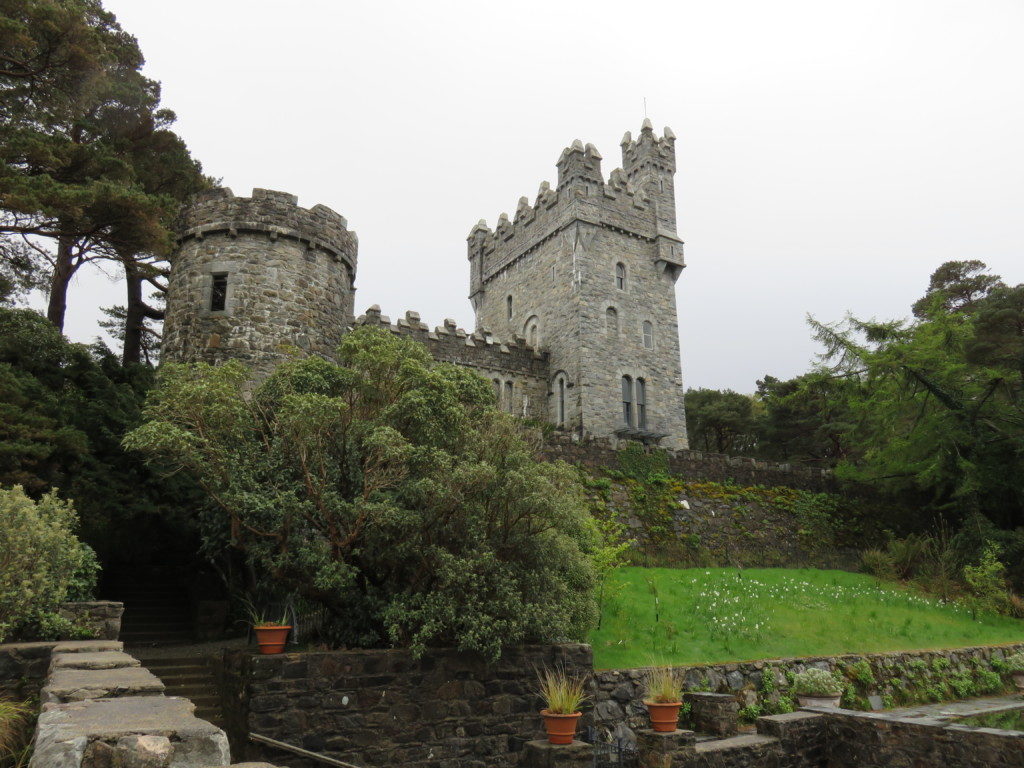
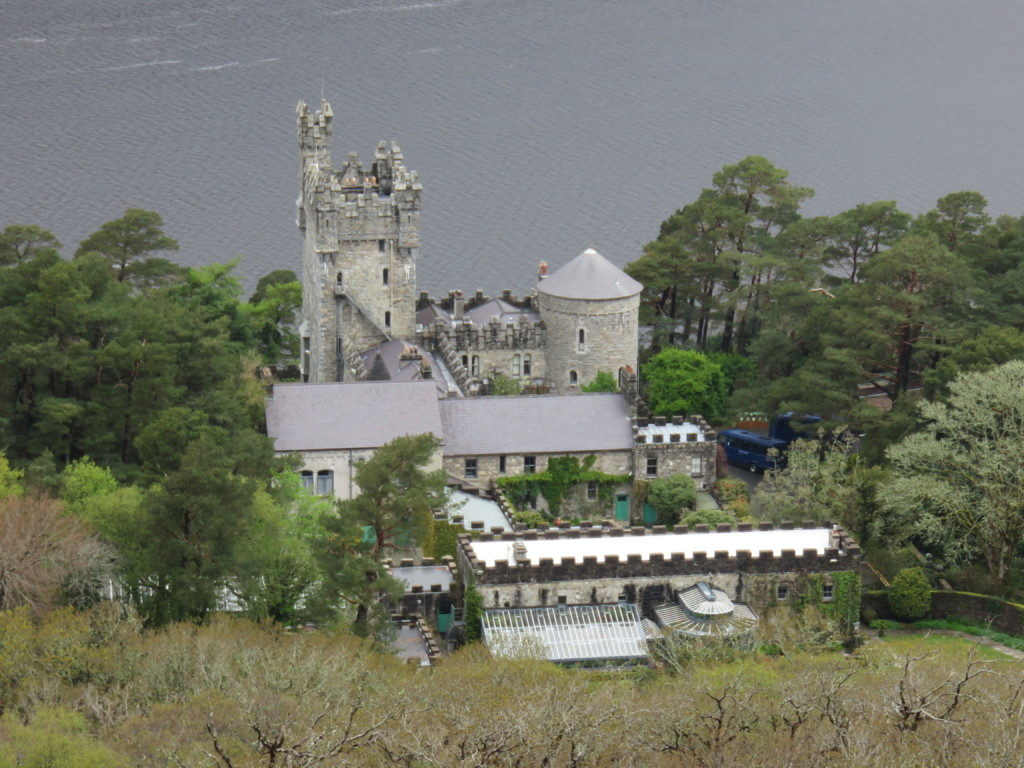
Admission to the gardens is free, but access to the castle is by private guided tour only. Tours cost €5 (concessions available) and last about 40 minutes. The tour is well worth it to see the beautifully preserved interiors that boast original antiques and furnishings. The staff do a wonderful job of sharing the fascinating stories about the history of the castle and its previous owners. A particularly fascinating story involves Arthur Kingsley Porter, the renowned American millionaire and Harvard Professor who mysteriously disappeared without a trace while walking along the cliffs of Inishbofin Island in County Donegal in 1933. No trace of him was ever found which led to numerous theories about what happened to him, including murder, suicide and also faking his own death. Details later surfaced about his battle with depression and his secret gay relationship that had recently ended. The story of Porter’s life has now been told by Irish author Lucy Costigan who has written the book Glenveagh Mystery: The Life, Work and Disappearance of Arthur Kingsley Porter.

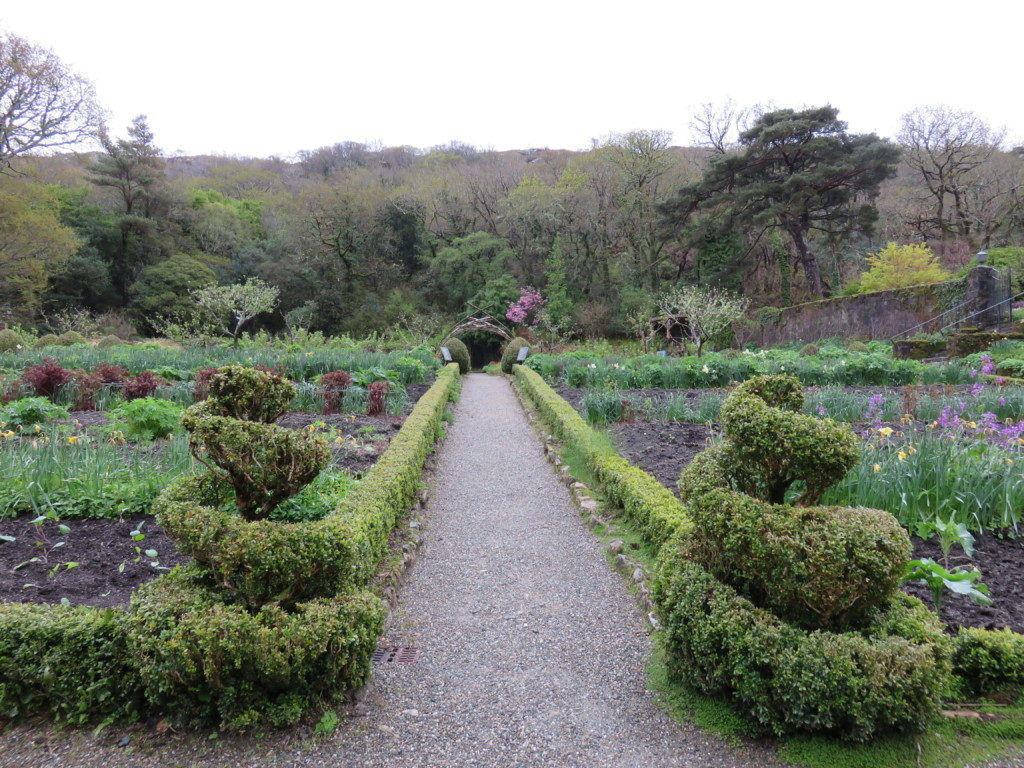
Yet my favourite stories were about the many famous guests that frequented the castle during the ownership of Henry Plumer McIlhenny, a Philadelphian millionaire. Henry’s passion was art, and his friends consisted of famous artists and actors. His guest list sounds like a Who’s Who of American celebrities of the mid-20th century – Clark Gable, Greta Garbo, Charlie Chaplin, Marilyn Monroe, John Wayne – the list goes on.
After enjoying the castle, visit the onsite café for some delicious homemade refreshments before taking a walk around this beautiful park. Glenveagh National Park is famous for being home to one of the largest herds of red deer in Ireland, which graze on the upper mountains during the summer months and come down to the lowlands during the winter. The park also has a number of Golden Eagles, which were wiped out in Ireland over 100 years ago, mainly due to overhunting. Other animals to see in the park include the hare, stoat, badger, foxes and a wide range of birds.
Cycling Around Glenveagh National Park
The park offers cyclists well maintained cycle paths and bridleways. Bike hire is available from the main car park at the entrance to the park. During the warmer months from June to September they are open every day from 9.30am to 5.30pm. As well as traditional bikes, there are also electric bikes available to hire. Prices start from around €10 for three hours.
Fishing at Glenveagh National Park
If you are a keen fisher, then you can fish for sea trout, brown trout and the occasional salmon in Lough Beagh. Located in the heart of Glenveagh National Park, it’s a beautiful location in which to enjoy some fishing. The season runs from 15 July to 30 September and fishing takes place between 9.00am and 5.30pm each day. Access requirements are a Government angling licence (which includes a log book and tags) and a fishery permit. Fishing is fly only or dapping by boat and there are 2 boats available for hire each day, with a maximum of three anglers allowed per boat. No shoreline fishing is permitted. You can book your fishing trip at the Donegal Angling Holidays website. Make sure you bring clothing suitable for all weather conditions as there can be four seasons in one day!
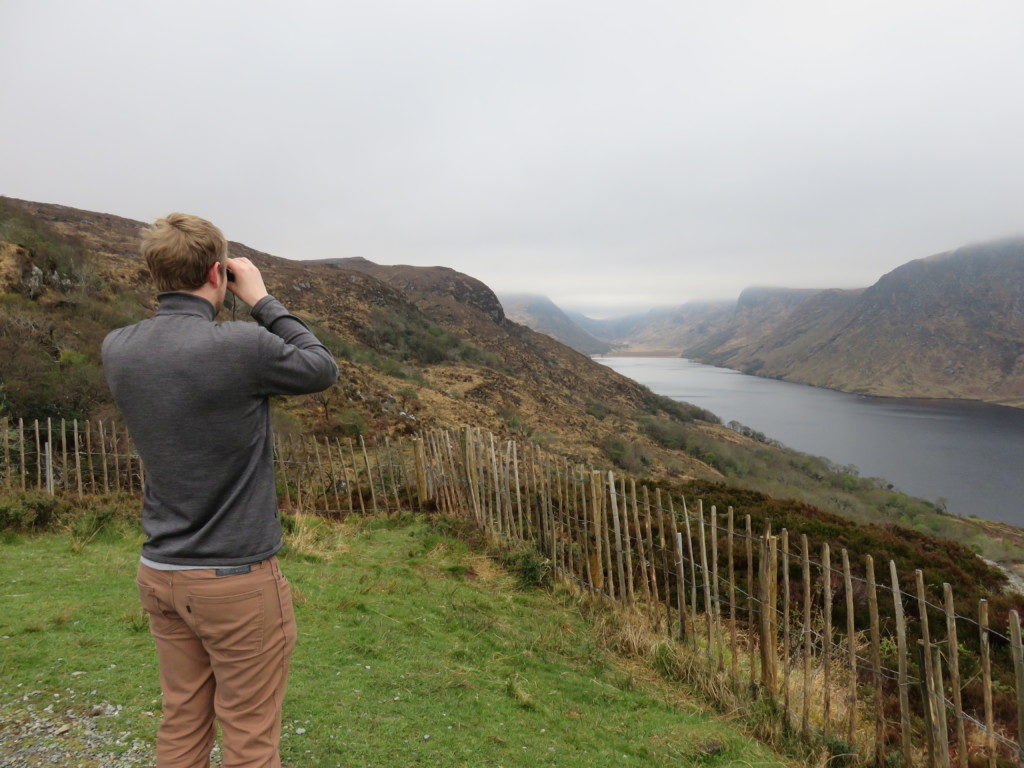
Practical Tips for Visiting Glenveagh National Park
- Entry fees: Entry to Glenveagh National Park and castle gardens are free, but there is a fee to visit the castle.
- Opening times: The National Park is open to the public all year round, apart from Good Friday and Christmas Week. During March to October, the park open from 9.00am to 6.00pm, with last admission at 5.00pm. During October to March, the park is open from 9.00am to 5.00pm, with last admission at 4.00pm. If you are planning to visit during the summer months, be aware that it can get really busy, so plan to arrive early to avoid the crowds. To get the most out of this beautiful national park, plan to spend an entire day there.
- What to bring: Bring wet weather gear – it is Ireland after all. Glenveagh can experience all four seasons in one day. Don’t forget your camera! The views and scenery are absolutely stunning. Midges can be out in force in the warmer months so take some repellent with you to avoid being bitten (they really like to bite!).
- Amenities: Enjoy the delicious home cooked food available at the castle café. Clean toilets are available for free at the castle and visitor centre. Dogs are allowed in the park, but must be kept on a leash.
- Find out more about visiting Glenveagh National Park and castle at their website.
- Language: English
- Currency: Euro
- Tipping: Not required, but people usually round up.
- Electricity: The electrical current is 230 volts AC. Wall outlets take a three-pronged plug only used in Ireland and the United Kingdom. However, you are better off purchasing a
worldwide adaptor with USB ports that can be used in Ireland as well as other countries. At least then you can potentially get some further use out of it on future vacations.
- Driving: In Ireland they drive on the left hand side of the road with speed signs in kilometres per hour. Read my post on How to Drive Around Ireland. If you are planning on renting a vehicle, then read What to Expect When Renting a Vehicle in Ireland.
- Navigating: We used Google’s free Offline Maps. Google Offline Maps allows you to access free maps for navigating that can be used offline i.e. you don’t need WIFI, data, or roaming to be able to use them. Follow this detailed guide on how to use Googles Offline Maps. Warning: Both phone reception and mobile networks can be patchy. Even if you do have a data plan in Ireland, DON’T rely on being able to access the mobile networks to access Google online maps. Make sure you download a map to use when you find yourself without internet.
- Using your phone as a GPS will drain your battery quickly, so use a portable charger which you can use to charge your phone and any other chargeable devices.
- And finally, you could also purchase an Irish road map. At least it’s reliable and won’t run out of battery or malfunction like the electronic options!
- Wondering what to pack? This is a list of essential items that I packed for my trip around Ireland.




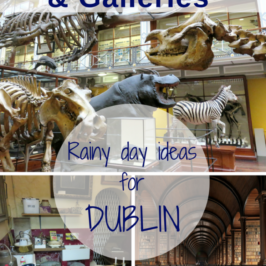
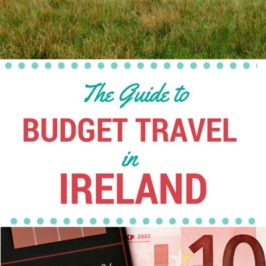
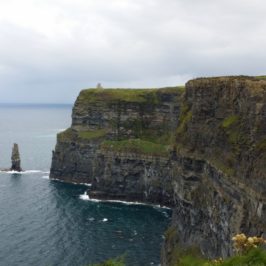
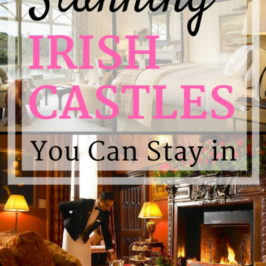
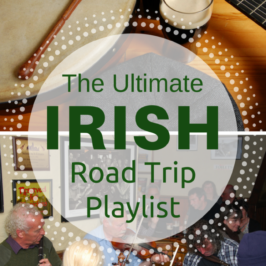

Leave a Reply